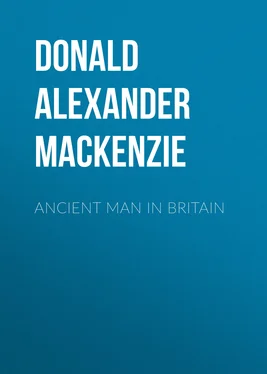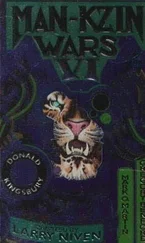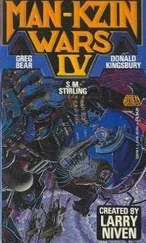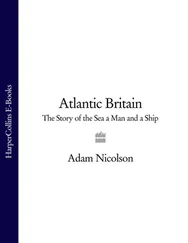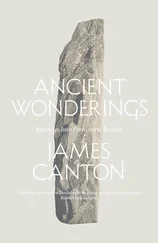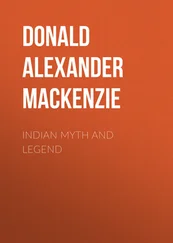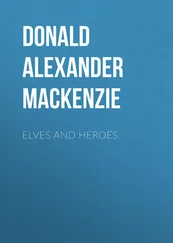Donald Alexander Mackenzie - Ancient Man in Britain
Здесь есть возможность читать онлайн «Donald Alexander Mackenzie - Ancient Man in Britain» — ознакомительный отрывок электронной книги совершенно бесплатно, а после прочтения отрывка купить полную версию. В некоторых случаях можно слушать аудио, скачать через торрент в формате fb2 и присутствует краткое содержание. Жанр: foreign_prose, История, Биология, foreign_edu, foreign_antique, на английском языке. Описание произведения, (предисловие) а так же отзывы посетителей доступны на портале библиотеки ЛибКат.
- Название:Ancient Man in Britain
- Автор:
- Жанр:
- Год:неизвестен
- ISBN:нет данных
- Рейтинг книги:3 / 5. Голосов: 1
-
Избранное:Добавить в избранное
- Отзывы:
-
Ваша оценка:
- 60
- 1
- 2
- 3
- 4
- 5
Ancient Man in Britain: краткое содержание, описание и аннотация
Предлагаем к чтению аннотацию, описание, краткое содержание или предисловие (зависит от того, что написал сам автор книги «Ancient Man in Britain»). Если вы не нашли необходимую информацию о книге — напишите в комментариях, мы постараемся отыскать её.
Ancient Man in Britain — читать онлайн ознакомительный отрывок
Ниже представлен текст книги, разбитый по страницам. Система сохранения места последней прочитанной страницы, позволяет с удобством читать онлайн бесплатно книгу «Ancient Man in Britain», без необходимости каждый раз заново искать на чём Вы остановились. Поставьте закладку, и сможете в любой момент перейти на страницу, на которой закончили чтение.
Интервал:
Закладка:
"His short, thick-set, and coarsely built body was carried in a half-stooping slouch upon short, powerful, and half-flexed legs of peculiarly ungraceful form. His thick neck sloped forward from the broad shoulders to support the massive flattened head, which protruded forward, so as to form an unbroken curve of neck and back, in place of the alteration of curves, which is one of the graces of the truly erect Homo sapiens . The heavy overhanging eyebrow ridges, and retreating forehead, the great coarse face, with its large eye-sockets, broad nose, and receding chin, combined to complete the picture of unattractiveness, which it is more probable than not was still further emphasized by a shaggy covering of hair over most of the body. The arms were relatively short, and the exceptionally large hands lacked the delicacy and the nicely balanced co-operation of thumb and fingers, which is regarded as one of the most distinctive of human characteristics." 4 4 Primitive Man.
As Professor Osborn says: "the structure of the hand is a matter of the highest interest in connection with the implement-making powers of the Neanderthals". He notes that in the large and robust Neanderthal hand, "the joint of the metacarpal bone which supports the thumb is of peculiar form, convex, and presenting a veritable convex condyle, whereas in the existing human races the articular surface of the upper part of the thumb joint is saddle-shaped, that is concave from within backward, and convex from without inward". The Neanderthal fingers were "relatively short and robust". 5 5 Men of the Old Stone Age (1916), pp. 240-1.
The Crô-Magnons present a sharp contrast to the Neanderthals. In all essential features they were of modern type. They would, dressed in modern attire, pass through the streets of a modern city without particular notice being taken of them. One branch of the Crô-Magnons was particularly tall and handsome, with an average height for the males of 6 feet 1-1/2 inches, with chests very broad in the upper part, and remarkably long shin-bones that indicate swiftness of foot. The Neanderthals had short shins and bent knees, and their gait must have been slow and awkward. The Crô-Magnon hand was quite like that of the most civilized men of to-day.
It is of importance to bring out these facts in connection with the study of the development of early civilization in our native land, because of the prevalence of the theory that in collections of stone implements, dating from remote Palæolithic times till the Neolithic Age, a complete and orderly series of evolutionary stages can be traced. "As like needs", says one writer in this connection, "produce like means of satisfaction, the contrivances with which men in similar stages of progress overcome natural obstacles are in all times very much the same." 6 6 British Museum—A Guide to the Antiquities of the Stone Age , p. 76 (1900).
Hugh Miller, the Cromarty stonemason and geologist, was one of the first to urge this view. In 1835, he wrote in his Scenes and Legends , (1st edition, pp. 31, 32):
"Man in a savage stage is the same animal everywhere, and his constructive powers, whether employed in the formation of a legendary story or of a battleaxe, seem to expatiate almost everywhere in the same rugged track of invention. For even the traditions of this first stage may be identified, like its weapons of war, all the world over." 7 7 Miller had adopted the "stratification theory" of Professor William Robertson of Edinburgh University, who, in his The History of America (1777), wrote: "Men in their savage state pass their days like the animals round them, without knowledge or veneration of any superior power".
He had written in this vein after seeing the collection of stone weapons and implements in the Northern Institution at Inverness. "The most practised eye", he commented, "can hardly distinguish between the weapons of the Old Scot and the New Zealander." Eyes have become more practised in dealing with flints since Miller's time. Andrew Lang remembered his Miller when he wrote:
"Now just as the flint arrowheads are scattered everywhere, in all the continents and isles—and everywhere are much alike, and bear no very definite marks of the special influence of race—so it is with the habits and legends investigated by the student of folk-lore". 8 8 Custom and Myth (1910 edition), p. 13. Lang's views regarding flints are worthless.
The recent discovery that the early flints found in Western Europe and in England were shaped by the Neanderthals and the pre-Neanderthals compels a revision of this complacent view of an extraordinarily difficult and complex problem. It is obvious that the needs and constructive powers of the Neanderthals, whose big clumsy hands lacked "the delicate play between the thumb and fingers characteristic of modern races", could not have been the same as those of the Crô-Magnons, and that the finely shaped implements of the Crô-Magnons could not have been evolved from the rough implements of the Neanderthals. The craftsmen of one race may, however, have imitated, or attempted to imitate, the technique of those of another.
There was a distinct break in the continuity of culture during the Palæolithic Age, caused by the arrival in Western Europe of the ancestors of Modern Man. The advent of the Crô-Magnons in Europe "represents on the cultural side", as Professor Elliot Smith says in Primitive Man , "the most momentous event in its history".
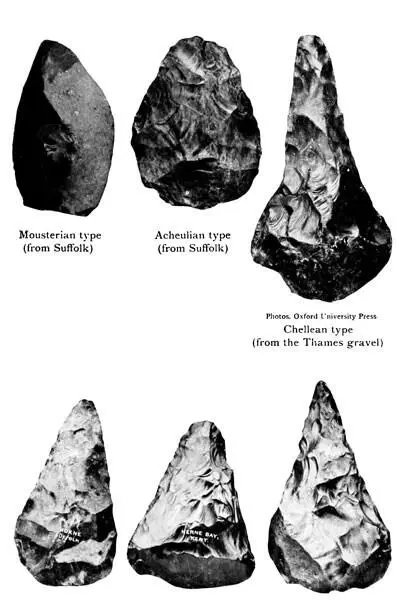
Photo. Mansell
EXAMPLES OF LOWER PALÆOLITHIC INDUSTRIES FOUND IN ENGLAND
(British Museum)
Some urge that the term "Palæolithic" should now be discarded altogether, but its use has become so firmly established that archæologists are loth to dispense with it. The first period of human culture has, however, had to be divided into "Lower" and "Upper Palæolithic"—Lower closing with the disappearance of the Neanderthals, and Upper beginning with the arrival of the Crô-Magnons. These periods embrace the sub-divisions detected during the latter half of last century by the French archæologists, and are now classified as follows:
Lower Palæolithic—
1. Pre-Chellean.
2. Chellean (named after the town of Chelles, east of Paris).
3. Acheulian (named after St. Acheul in Somme valley).
4. Mousterian (named after the caves of Le Moustier in the valley of the River Vézère).
Upper Palæolithic—
1. Aurignacian (named after Aurignac, Haute Garonne).
2. Solutrean (named after Solutré, Saône-et-Loire).
3. Magdalenian (named after La Madeleine in the valley of the River Vézère).
Then follows, in France, the Azilian stage (named after Mas d'Azil, a town at the foot of the Pyrenees) which is regarded as the link between Upper Palæolithic and Neolithic. But in Western Europe, including Britain, there were really three distinct cultures during the so-called "Transition Period". These are the Azilian, the Tardenoisian, and the Maglemosian. These cultures were associated with the movements of new peoples in Europe.
The pre-Chellean flints (also called Eoliths) were wrought by the pre-Neanderthals. Chellean probably represents the earliest work in Europe of a pre-Neanderthal type like Piltdown man. The most characteristic implement of this phase is the coup de poing or pear-shaped "hand axe", which was at first roughly shaped and unsymmetrical. It was greatly improved during the Acheulian stage, and after being finely wrought in Mousterian times, when it was not much used, was supplanted by smaller and better chipped implements. The Neanderthals practised the Mousterian industry.
Читать дальшеИнтервал:
Закладка:
Похожие книги на «Ancient Man in Britain»
Представляем Вашему вниманию похожие книги на «Ancient Man in Britain» списком для выбора. Мы отобрали схожую по названию и смыслу литературу в надежде предоставить читателям больше вариантов отыскать новые, интересные, ещё непрочитанные произведения.
Обсуждение, отзывы о книге «Ancient Man in Britain» и просто собственные мнения читателей. Оставьте ваши комментарии, напишите, что Вы думаете о произведении, его смысле или главных героях. Укажите что конкретно понравилось, а что нет, и почему Вы так считаете.
